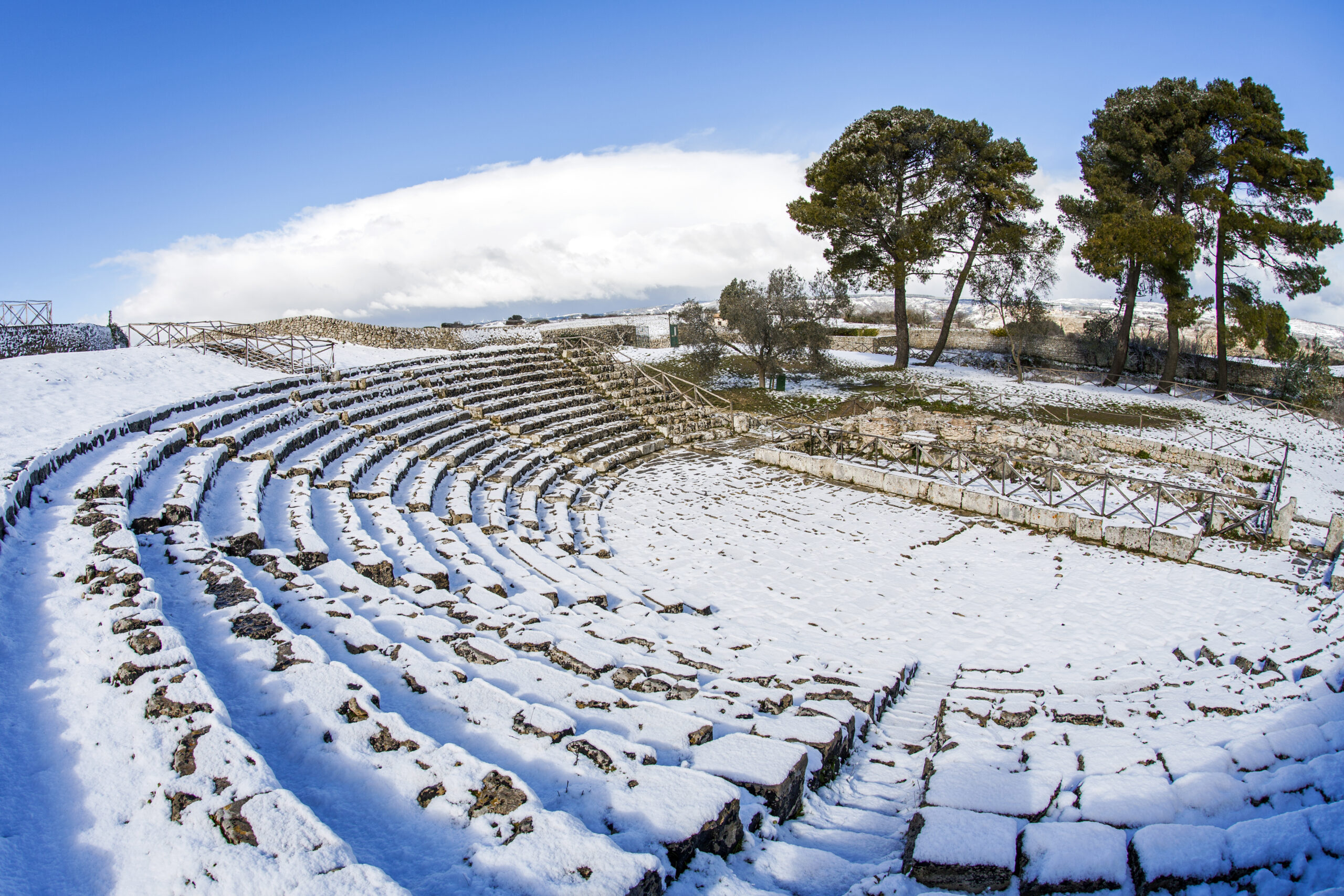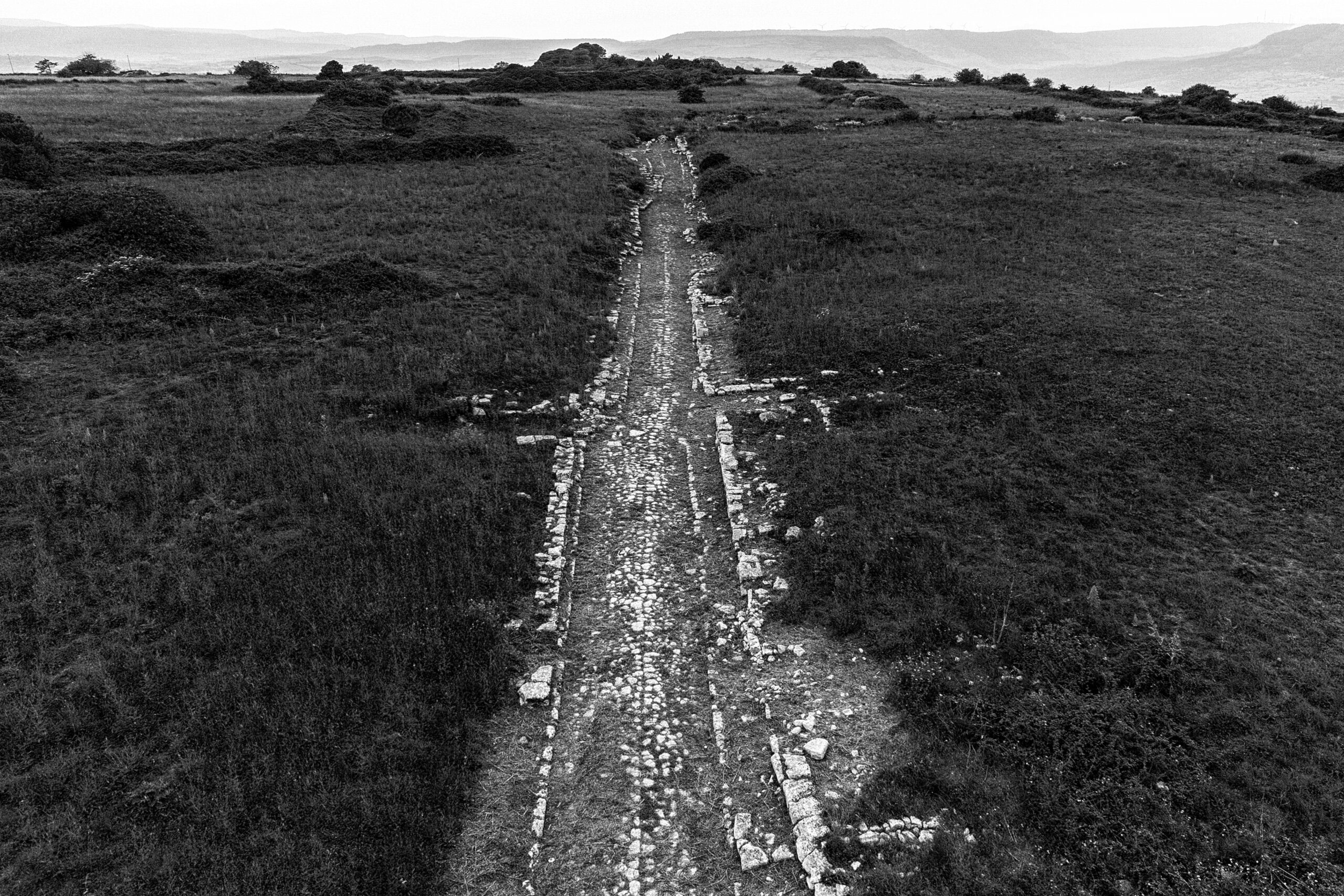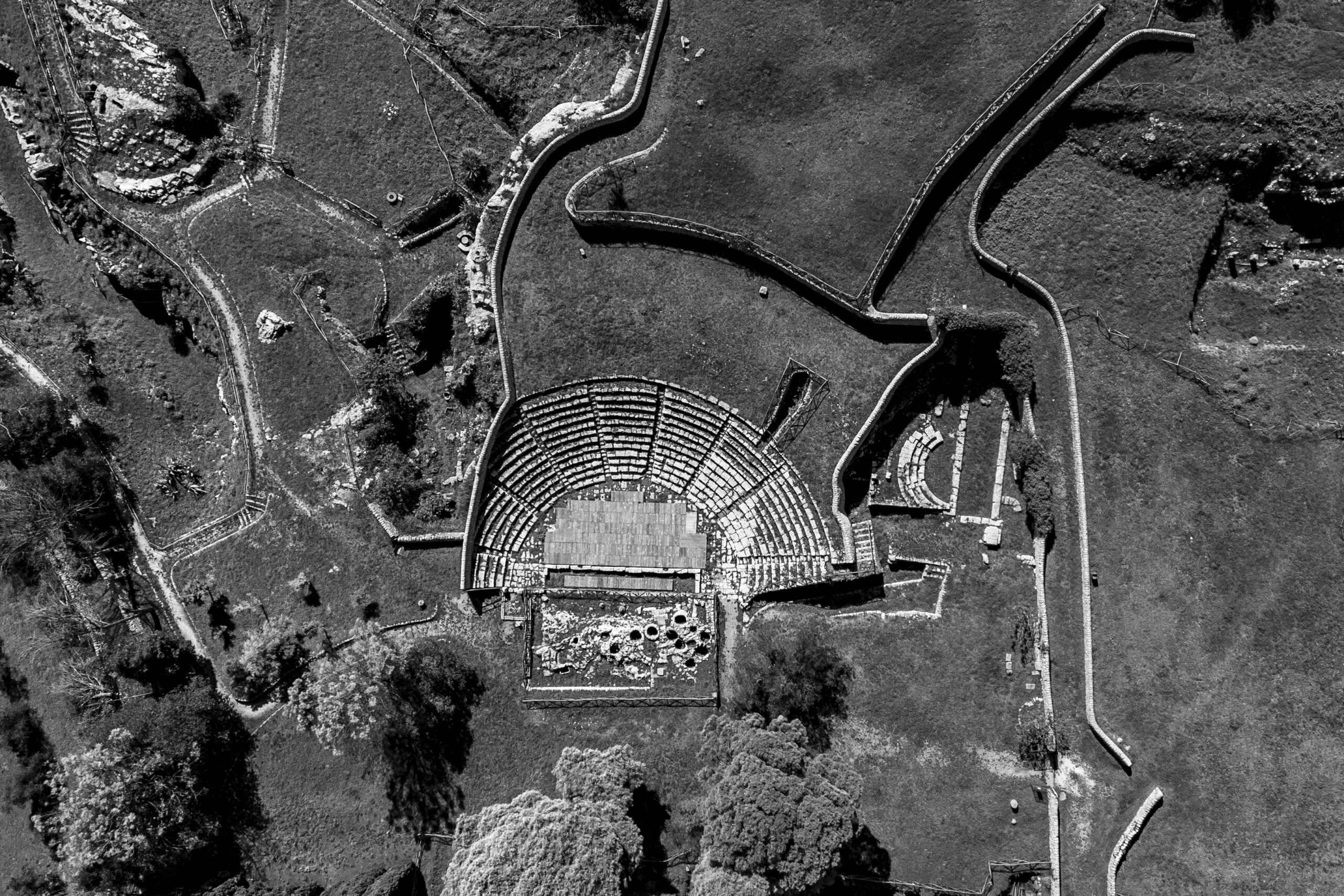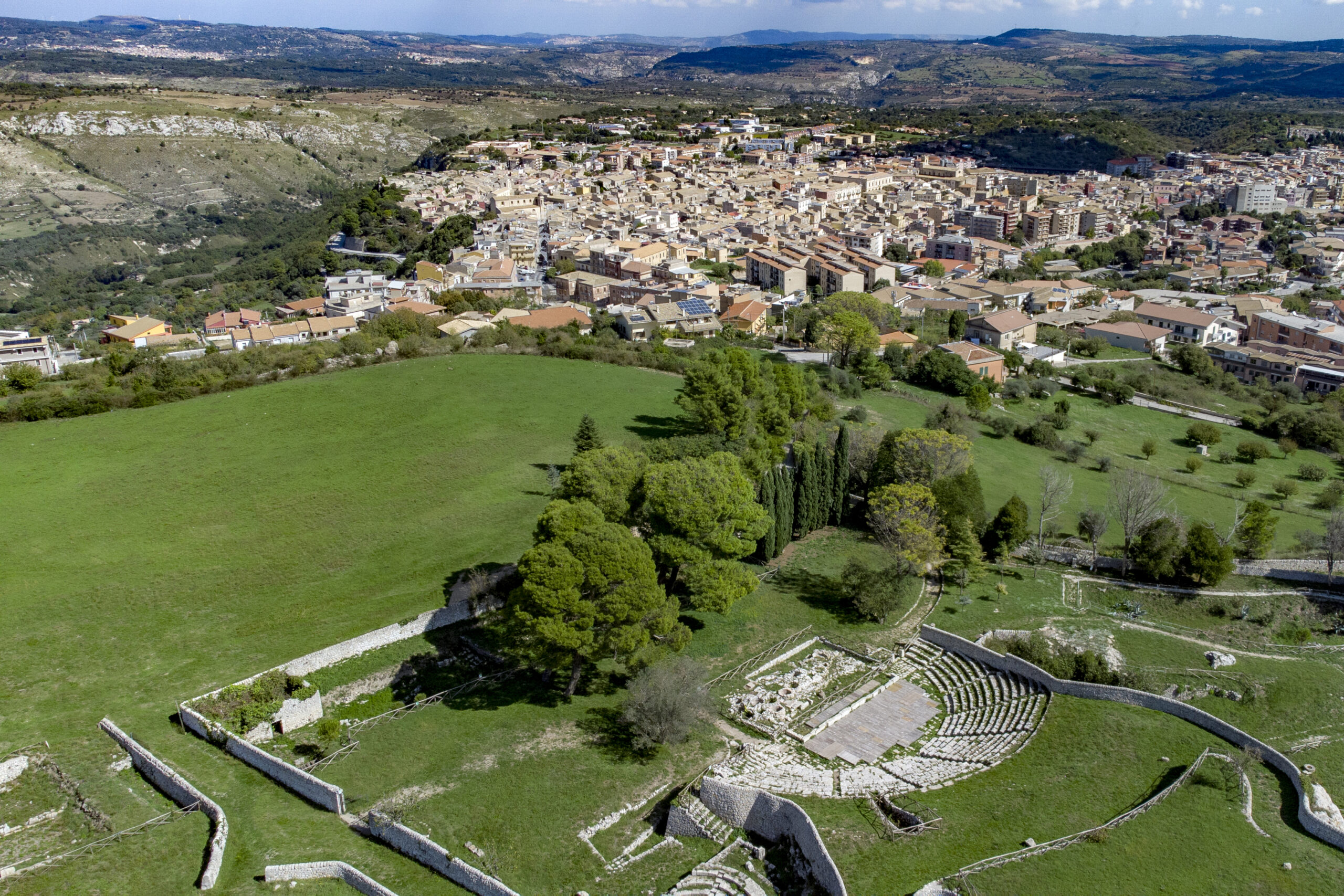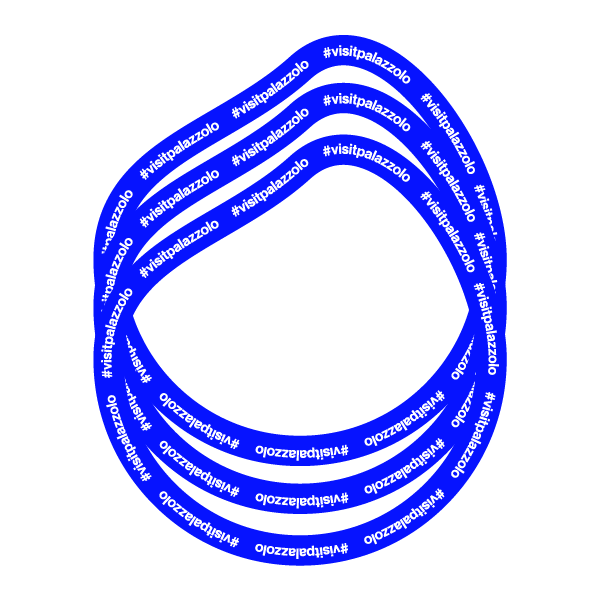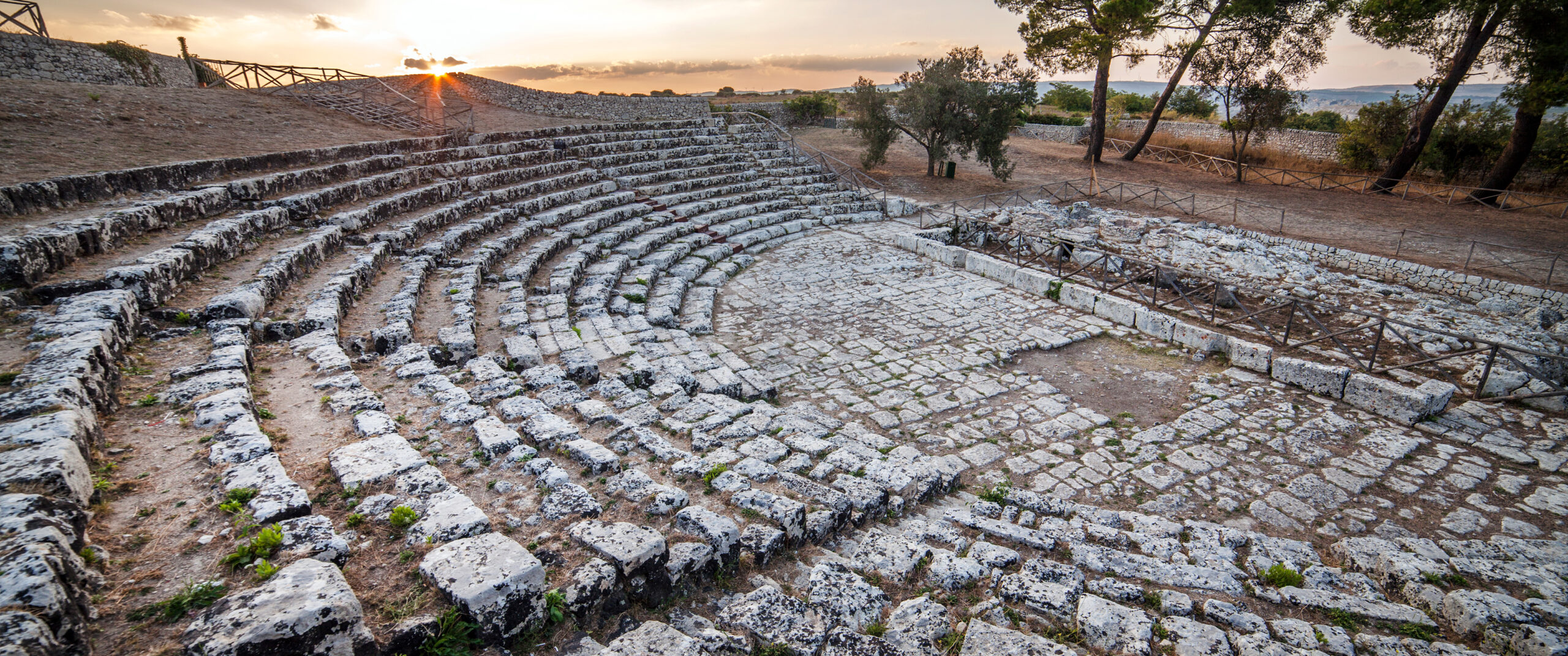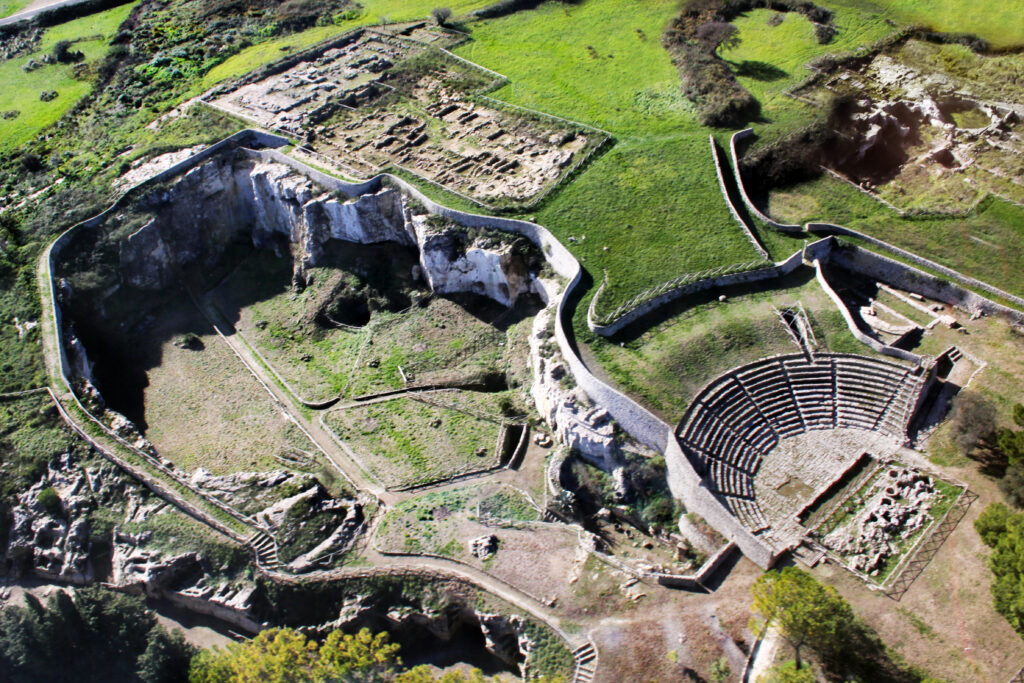
“It is towards Palazzolo Acreide that you should direct your footsteps, where not only the
eighteenth-century layout of the residential area but also the vestiges of the Greek era are set to seduce you” (Gesualdo Bufalino).
The Greek Theatre is the most important monument of Akrai’s archeological area. The
exact dating is uncertain, but it can be dated back to the age of lerone II, around the second half of the IlI century B.C.. The theatre faces north; it is composed of eight sets of
stairs and twelve rows of seats, totalling about 700 seats. A peculiarity of this site is the
narrow tunnel that on the western flank connects the theatre to the bouleterion. The theatre of Akrai is also rendered unique by the non perfectly circular orchestra; this semi-
circular shape has the effect of making the scene “extraordinarily ahead of its times” with
respect to the traditional classic criteria. In Roman ages, the theatre underwent several
changes: the Hellenistic logeion was superimposed with a pulpitum.
The orchestra was paved and at its eastern entrance a rectangular room, which may have been a kiosk, was built.
Finally, the remains of Byzantine mill are clearly visible on the scene. Adjacent to the theatre, to the west, lies the Bouleterion, a smaller building, used for the senate’s meetings. It was discovered thanks to the excavation works carried out by the archeologist Baron Gabriele Judica in 1820. Another peculiarity is a circular building, considered by most to be a Roman age thermal baths, converted to baptismal font in Byzantine times. The Temple of Aphrodite was found thanks to an ancient inscription that allowed the archeologists to claim that in the ancient Akrai there were three temples: the Aphrodision, the Artemision and the Koreion.
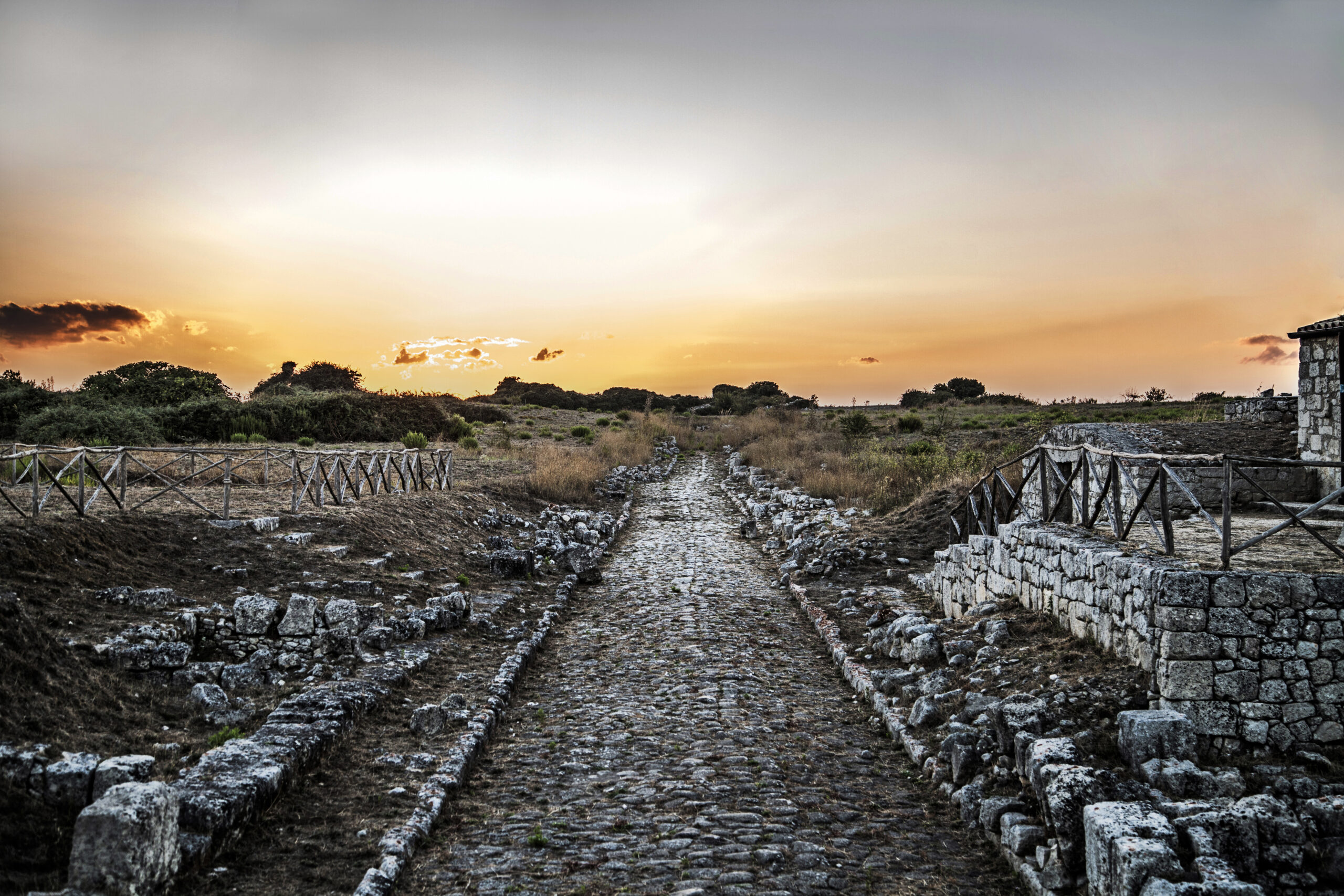
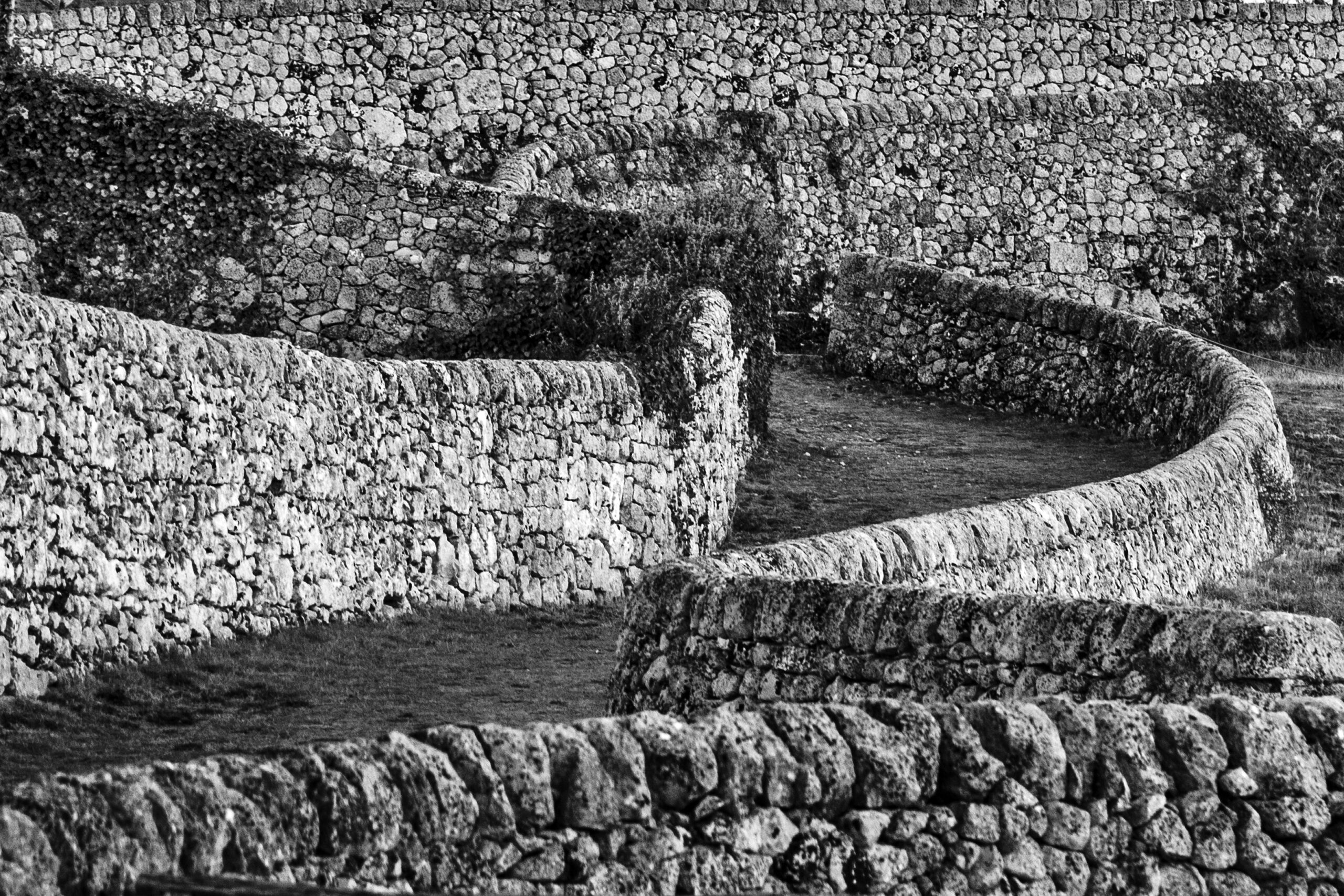
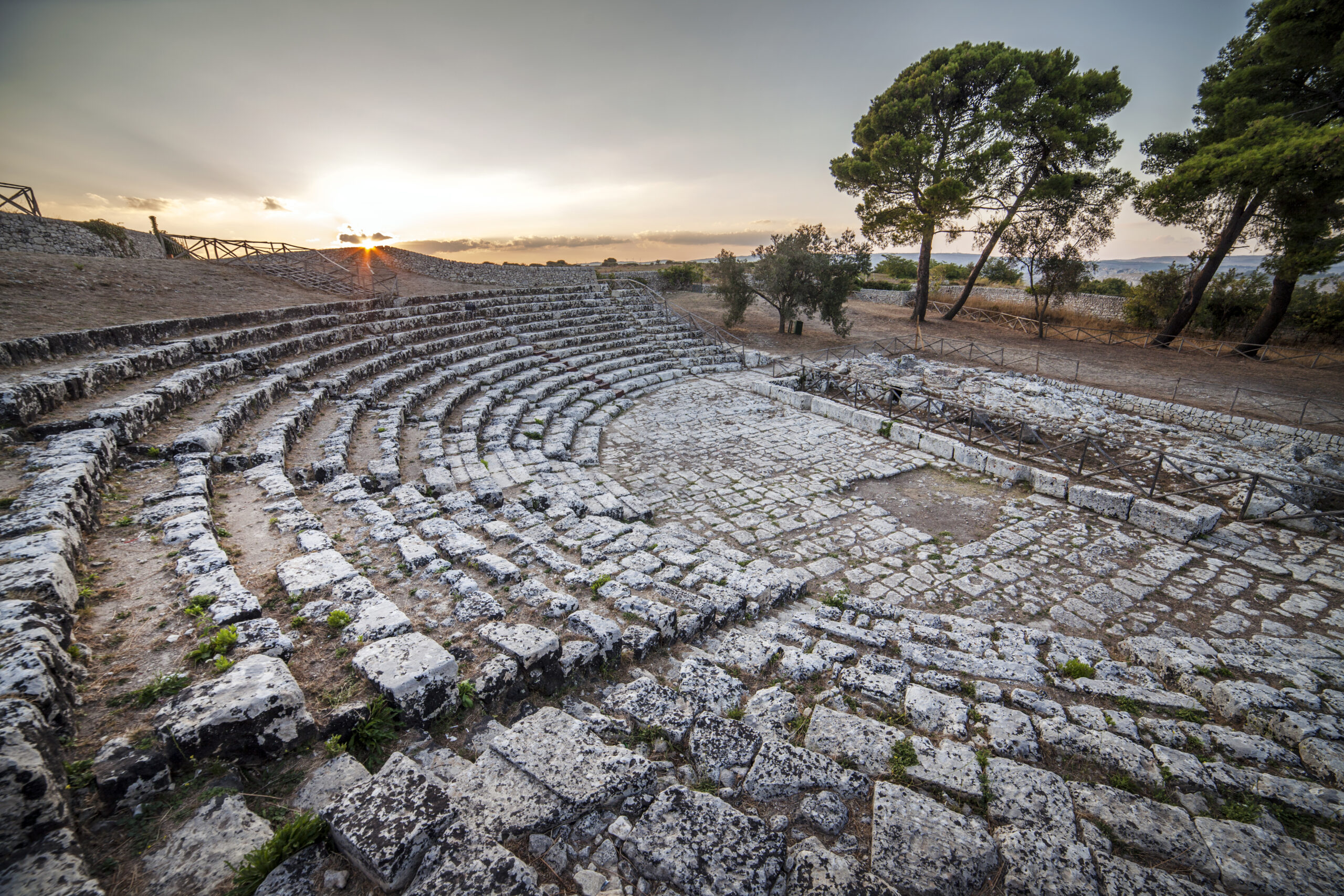
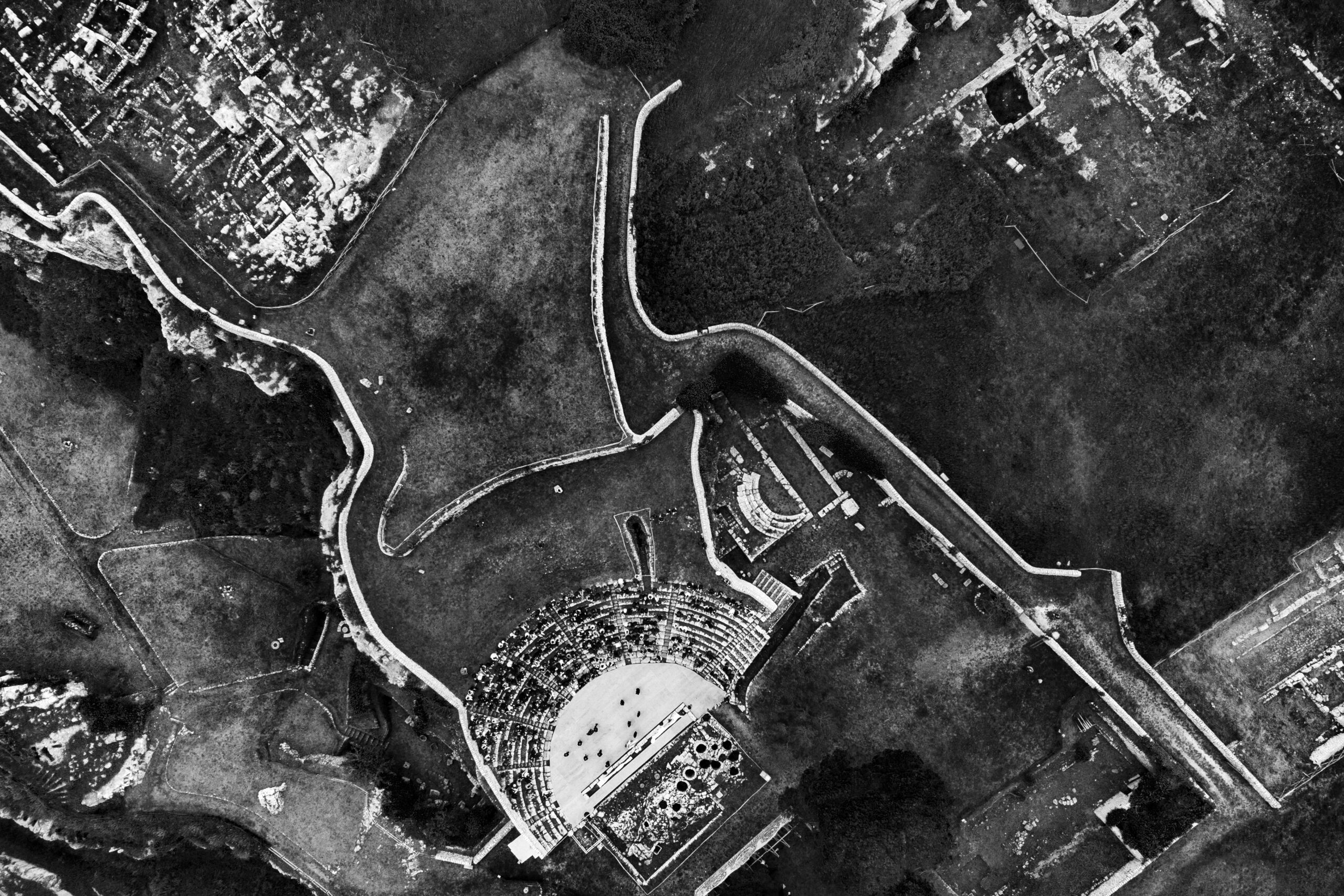
The surrounding walls and the road network. The dating of the walls is uncertain, between the IV and the second half of the Il century B.C.. The inscriptions that have been found point to the existence of two gateways in the walls: the “Siracusana” portal, that used to be located not far from the present entrance, and the “Selinuntina” portal that was located at the end of the Acremonte. The Latomie can be found behind the theatre; originally stone quarries, they were used to provide the construction materials for the building of the houses and monuments of Akrai, while at a later stage they became a necropolis, religious sites and dwellings. The Intagliata is the bigger latomia. Inside there are several hypogeums and arcosolium burial places dating back to the Christian age. The Intagliatella, whose Northern side was dubbed by the archeologist Paolo Orsi the “Sacred Way”, has a typical L form and is the most ancient of the stone quarries of Akrai.
In the Feral Temples, located close to the Santoni, that is in the outskirts of the town, the
walls of the quarry are dotted by hundreds of small cavities used to hold the devotional
offerings for the dead.
Towards south-east of the ancient city of Akrai, there is the Pinita Necropolis and other necropolises. The Pinita Necropolis “is the most visible monument of the prehistoric life of Palazzolo”. The necropolis was dug artificially by man; the tombs are oval in shape (so-called oven-tombs) with a flat ceiling. The Greek Necropolis and the Hellenistic one are located respectively in c/da Torre Judica and in Colleorbo. The Santoni are the most extensive collection of depictions of the Magna Mater cult that the ancient world has left us. The site hosts 12 large engravings, ten of which portray the same female figure.
It is the most important sanctuary dedicated to the goddess Cybele, whose cult, originally
from Frigia, took root first in Greece and later in Rome, by the name Magna Mater or
Ceres.
